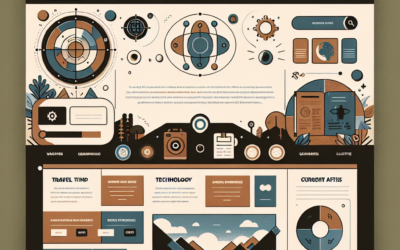Discover how The Impact of Web Design on Conversion Rates can transform your online presence, boost sales, and enhance user experience.
The Importance of Visual Design in Crafting Engaging User Experiences for Websites and Brands
Visual design is a crucial aspect that shapes the way users interact with websites and brands. It extends beyond mere aesthetics, influencing usability, accessibility, and overall user experience. The visual elements in any project, from color schemes to typography, play a significant role in conveying a brand’s values and initiating emotional connections with audiences.
One of the fundamental principles of visual design is the concept of color theory. Understanding how colors affect mood and perception allows designers to create visually appealing designs that resonate with their audience. For example, warm colors often evoke excitement and energy, while cooler tones can impart calmness and professionalism. Selecting the right color palette can significantly enhance a website’s efficacy by encouraging desired actions from users.
Typography is another critical element that enhances visual design. The correct choice of font styles and sizes aids in readability and ensuring that the content is engaging. Good typography establishes a hierarchy that guides users through the information, making it easier to digest. Learning how to effectively implement typography can dramatically improve the overall design and functionality of a website, ensuring visitors have a positive experience.
In the digital age, responsiveness is indispensable. With users accessing websites from various devices, adopting a mobile-first design approach is crucial. This methodology prioritizes designing for smaller screens first, ensuring that the most vital content is easily accessible. This practice not only enhances user experience but also positively impacts search engine rankings, as more users rely on mobile devices for browsing.
Moreover, as websites evolve, features like micro-interactions have gained popularity in enhancing user engagement. These subtle animations and design responses can make interactions feel more intuitive and enjoyable, leading to increased user satisfaction and time spent on the site.
In conclusion, visual design plays a pivotal role in creating effective digital experiences. By incorporating principles of color theory, typography, and responsive design, businesses can engage their audiences more effectively, leading to better user experiences and enhanced brand identity. By continuously adapting and embracing modern design trends, brands can stay relevant in a competitive digital landscape.
How to Build a High-Converting Ecommerce Website
Learn how to build a high-converting ecommerce website with essential strategies, design tips, and optimization techniques to boost your online sales.
How to Build Trust and Credibility Through Website Design
Learn how to Build Trust and Credibility Through Website Design with user-friendly elements, responsive layouts, and effective SEO strategies for business growt
Creating a Seamless User Journey on Your Website
Enhance your online presence by Creating a Seamless User Journey on Your Website. Discover key strategies for improved user experience and engagement.
The Importance of Visual Design in SEO – Search Engine Optimization
Discover The Importance of Visual Design in SEO and how effective design enhances user engagement, boosts rankings, and drives conversions.



